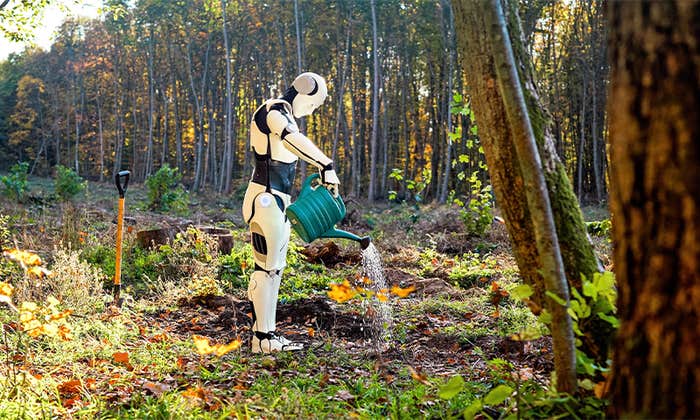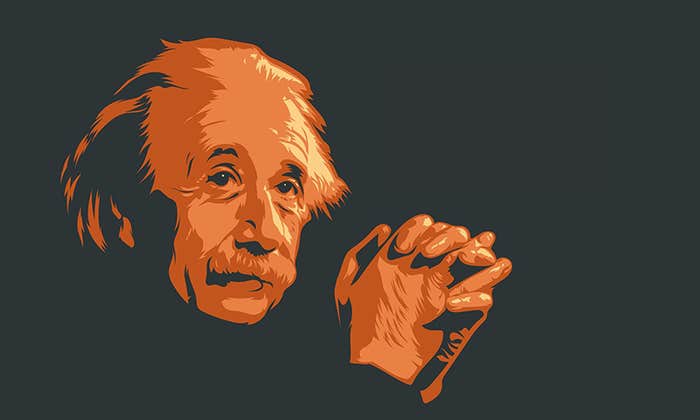I listened to a favorite album from 1983 the other day that gave me the profoundest joy. I danced around my kitchen singing along to every word. My whole body felt happy.
The album is Field Day by the rock singer and songwriter Marshall Crenshaw. Everything I love in rock is there—melodies that ingratiate, beats that elevate, and a voice ingrained with regret for love gone astray. “Do you remember the promise I gave you? The one I swore I would hold to?” he sings in the song “Our Town.” “Well, you’re there, I’m here, and everything I said was wrong.” The whole album is just perfect.
I hadn’t listened to Field Day in 25 years. And what I was feeling wasn’t nostalgia—longing for better days gone by. That’s because of Crenshaw’s natural elan as a songwriter. Field Day transcends the pop culture of the ’80s. Every note sounded as fresh as if it was written today.
It’s also because better days are a myth. Our brains never see the past clearly. They are like painters who are never satisfied. They constantly retouch the past with the colors of the present, putting a fresh version of ourselves on display for us to ponder.
Turns out memory is a castle made of sand. That’s unsettling, no?
That’s one of the captivating insights in 2023’s Why We Remember by Charan Ranganath, a professor of psychology and neuroscience at the University of California, Davis. Memories are not a true or false picture of the past; they are a Monet lily pond.
“Most paintings typically include some mixture of details that are faithful to the subject, details that are distorted or embellished, and inferences and interpretations that are neither absolutely true nor entirely false, but rather a reflection of the artist’s perspective,” Ranganath writes. “The same is true of memory.”
I came away from Why We Remember with a beautiful picture of how memories make up the canvas of our mental lives. It’s an unnerving picture, too. Memories are as sensitive as teenagers. The slightest change in mood or environment will cause them to unravel or change appearances.
“Our memories are dynamic, malleable, and sometimes inaccurate because our brains were designed to navigate a world that is constantly changing,” Ranganath writes. “Human memory needed to be flexible and to adapt to context more than it needed to be static and photographically accurate.”
That’s a pretty great insight. It’s also pretty great how Ranganath scores his neurobiology with a rock-and-roll flourish.
In his time away from directing the Memory and Plasticity Program at UC Davis, Ranganath plays guitar and sings in a rock band (made up of fellow neuroscientists) called Pavlov’s Dogz. Their repertoire is mostly songs from the ’70s and ’80s by David Bowie, the Ramones, Joy Division, the Pixies, and Gang of Four.
Ranganath names chapters in Why We Remember after songs (“Just My Imagination,” “More Than a Feeling”) and opens them with quotes from Iggy Pop, the Flaming Lips, and this scientifically accurate slice of sageness by Nick Cave: “Memory is imagined; it is not real. Don’t be ashamed of its need to create.”
When Ranganath and I spoke over video recently, he was in his home office in Davis, sitting in front of a wall of guitars. I told him his book gave me an existential shiver. Our self, built on our memories, is our psychological anchor in a turbulent world. Turns out it’s a castle made of sand. That’s unsettling, no?

“Yes, it definitely can be,” Ranganath said. “Although, it’s not as if people who have amnesia have no sense of self. You can have a significant memory disorder and still have a sense of self. But it’s incredibly impoverished. What you find in people who suffer memory loss from a stroke or electroconvulsive therapy is that their sense of self gets stuck at the time of the event. They have an idea of who they were but can’t update it into a sense of who they are now. It can be true for all of us. As I get older, it can be scary to look in the mirror. I think, ‘I should be looking differently than I do!’ So, in some sense, we don’t optimally update our memories to catch up to our current selves.”
Evolution is to blame for our shaky memories and selves. If we evolved to remember everything, we couldn’t function due to the overload of sensory information. We’d be mentally paralyzed on the savanna. While we stood there recording every sensation—the whoosh of the wind, the metallic gleam of the dragonfly, the musty smell of the air—we’d become an easy lunch for a predator. So much for human survival.
Instead, the clever brain uses its energy wisely to store only the sensory inputs that matter—the ones that seem new, surprising, have an edge. “Our brains are designed to give us the most information with the least amount of resources,” Ranganath told me. “That allows us to be cognitively nimble and flexible, with very little energy consumption. There’s no free lunch in a biological system like memory.”
Enter another clever invention of evolution: emotions. Fear, lust, despair, love, a whole suite of sensations, stir up biochemicals like noradrenaline and dopamine that flood the brain to stabilize or modulate the assemblies. The more intense the emotion, the more likely we are to remember the experience that caused it. Our ancestors quickly learned not to sleep near the leopard den again.
How the brain creates “episodic memories” is a focus of Ranganath’s research. Neuroscientists have identified two basic types of memory. Semantic memory refers to remembering facts like the capital of New Jersey. Episodic memory refers to the act of recall that time-travels into the past to revive the experience of first hearing Bruce Springsteen’s “Thunder Road.”
Ranganath and his collaborators have done experiments that highlight how the brain stores information in schemas, or diagrams. “The way the human brain uses schemas to construct new memories is not unlike how an architect uses a blueprint to design houses,” Ranganath writes. “An architectural blueprint functions as a kind of map of the barebones information about the structure (walls, doors, stairs, windows, and so forth) that shows how everything is connected. The abstract nature of a blueprint means it can be reused over and over.”
The default mode network, an area in the neocortex, stores the schemas in cellular pieces that can be used to assemble new memories. The hippocampus, the seahorse-shaped area in the middle of the brain, is the builder.
Our brains are not designed to give us the entirety of reality.
In the brain, the hippocampus has great connections. “It gets inputs from virtually every kind of motivational chemical in the brain you can imagine,” Ranganath explained. During the act of remembering, the hippocampus uses its connections to the default mode network to “put the pieces together to store a specific episodic memory.”
Ranganath, fond of metaphors, writes that his and his collaborators’ research reveals forming an episodic memory is like building with LEGOs. “With LEGOs, you can use an instruction sheet to rebuild [a] medieval scene or use a different set of instructions that show how the same bricks can be combined to re-enact a scene from Star Wars. Likewise, when it comes to memory, the [default mode network] has pieces that can be reused across many different events.”
In the brain, though, the pieces don’t hold together snugly. “The very act of recalling a memory can lead it to become fragile and changeable,” Ranganath told me. “It can lead to distortions and misinformation, to the point where the memory becomes corrupted.”
The problem is other neurochemical players are always anxious to add their own pieces to a memory. These spoilsports are the cell assemblies that animate our present states of mind and moods. The act of remembering, Ranganath said, is “dominated by the beliefs and perspective we have in the moment.”
Our present perspectives often choose the movie to play in our minds. When the world looks ugly, it’s often nostalgia, “that bittersweet feeling of joy and sadness,” Ranganath said, that comes to our emotional rescue. We imagine carefree days of smart leaders and safe communities, friendly neighbors and better music. It’s perfectly natural.
“People tend to have a positive memory bias, and tend to recall positive events more often than negative ones,” Ranganath said. “And they tend to recall them more positively than they actually were. Then there’s the flipside, which is when you’re in a negative mood, you tend to remember events more negatively than they actually were. Every demagogue you can think of has cashed in on nostalgia, used it to create a toxic worldview of society falling apart, saying ‘I’m the one to take us back to the way things were.’”
Given the chameleon nature of our memories, changing their colors to suit different environments, do we ever see anything for what it is, remember it for what it was? To borrow one of Ranganath’s own rock lyric references, Is this the real life? Is this just fantasy?
“Our senses, our brains, are not designed to give us the entirety of reality,” he said. “They’re a window into reality. That’s good because reality is so infinitely dimensional. As we were discussing, you couldn’t function if you sensed everything. My dog can sense all sorts of frequencies that I can’t. So, we’re only getting a narrow band of the world, anyway.”
Yet we must have some clear recollections of events that happened to us? “We do,” Ranganath said. “Our memories clearly have elements of reality. In our lab conditions, we find some people are extraordinarily precise in their memories. They can remember all sorts of details. But the thing is, we infuse those details with meaning, with perspective, and build these stories, and that is uniquely human.”
Remembering is dominated by the perspective we have in the moment.
Memory, in fact, is an act of imagination. Mounds of research, based on brain scans, show the same mental processes and areas of the brain that we use to fantasize about sipping exotic cocktails in a hammock on a tropical beach, are the same processes we draw upon when recollecting the time we were, well, sipping exotic cocktails on a tropical beach.
“There’s a deep link between memory and imagination on so many levels,” Ranganath said to me, excitedly. “One of the cool levels to think about today is the products of human imagination are truly innovative, as opposed to something that I might get out of ChatGPT from some clever prompt. That’s because we have such weird experiences that are totally unique. We are predisposed to being in different places to experience different things, talking to different kinds of people, to feeling the full range of human emotions. We can put together things that would never come through some large language model trained on the internet.”
Interestingly, Ranganath compared the process of memory to being a scientist. His main gig, he said, was to collect data from experiments. He followed best practices to ensure his data was as accurate and unbiased as possible. But the theories hatched from science always came down to interpretation. “Interpretations are meaning generated from data,” he said. “The key is we don’t often bother to look at the difference between our interpretations and the data.”
The same is true for memory. We often don’t look at the difference between our experiences and our brain’s interpretation of them. But understanding that memories are a mix-and-match process, designed to be nimble and flexible to adapt to changing circumstances, can transform us. We can reflect on ourselves in ways that expand and animate our perspectives today.
This may not be a revelation to turn-of-the-20th-century French writer Marcel Proust, whose reflections on his memories constitute one of the greatest works of art in history, his series of novels, In Search of Lost Time. For the rest of us, to understand that your memories are not photographs but paintings that your brain, being the imaginative artist that it is, is constantly retouching, is a beautiful thing.
Listening to Field Day recently didn’t transform my brain into a movie of my life in 1983. But it certainly did stir neurochemicals to create traces of myself and feelings that year.
A vivid scene in my mind was my tiny living room in my San Francisco cottage, where I had my stereo, and often played Field Day—the vinyl LP, of course—as a release from the stress of finishing my master’s thesis in English literature. I wrote about how Southern author Walker Percy put the existentialist thinkers to work in his comic and ironic fiction about alienation.
Actually, my most detailed recollection of that time was carrying my pale blue electric Smith Corona to the typewriter shop on Market Street to get the eraser shavings cleaned out of it and one of the keys unstuck. “It’s time to replace this thing,” the owner said to me.
Those are wonderful recollections because I loved writing my thesis and was happy and proud with how it turned out. But playing Field Day in 2024 was more meaningful than it was in 1983. My listening mind had gained 41 years of experiences and memories. I thought about the deep and important place of music in my life, carrying me through amazing and wrenching times. My past was present, and I felt totally alive.
After his decades of research, I asked Ranganath what memory taught him most about being human.
“I was really impacted by Daniel Kahneman’s observation that we have an ‘experiencing self’ and a ‘remembering self,’” he said. “Your experiences of things are continuous in real time and associated with all sorts of feelings and thoughts and sensations. And then in the cold light of reason you have this remembering self in a completely different context, trying to make sense of yourself, a person with a very narrow window of experience. I tried to embrace that and very consciously ask myself, especially after I turned 50, ‘What are the memories I’m going to carry with me from this point on?’ I want to make choices to get the best memories I can.” ![]()
Lead image: Water Lilies (1916-1919) by Claude Monet




























